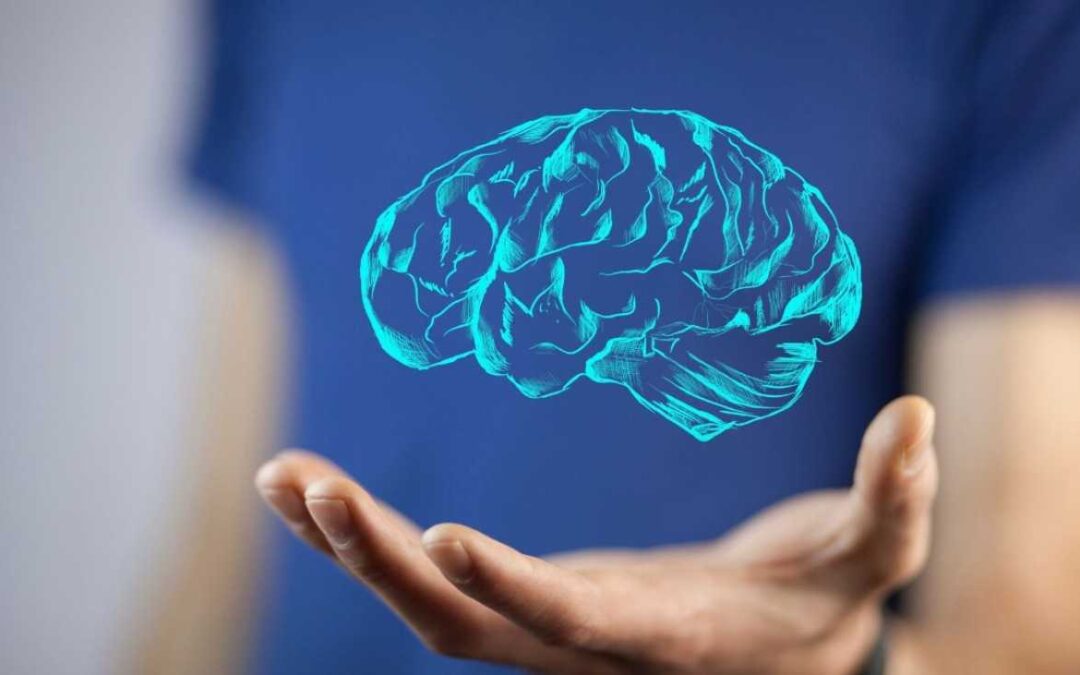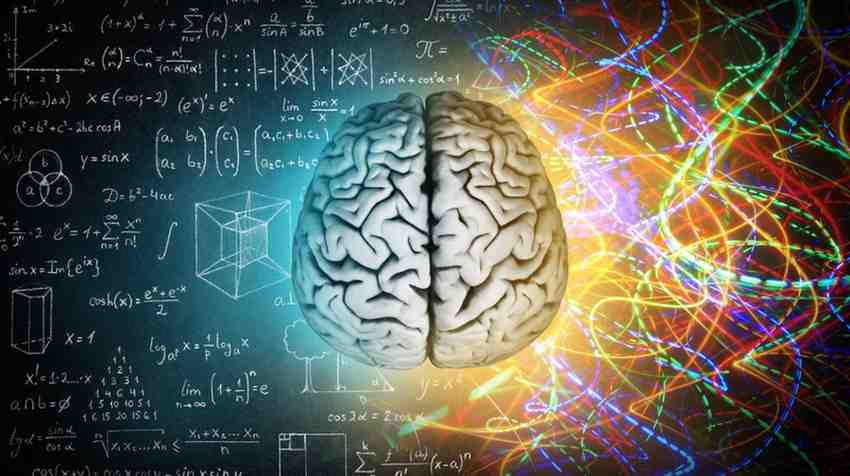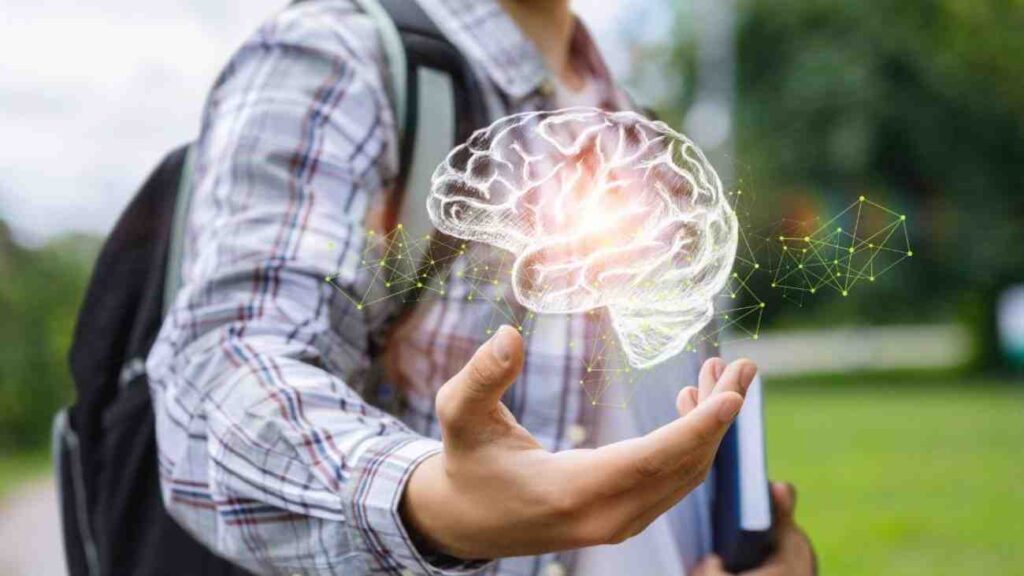loading...

by Sadaqut | Sep 27, 2024 | Educational
Living with anxiety and depression can often feel like navigating through a maze without a clear exit. These conditions can dominate one’s life, making even simple tasks feel overwhelming. For many, finding a therapy that offers a sense of hope and actionable steps forward can make a significant difference.
Solution-focused therapy (SFT) is one such approach that provides a more positive and forward-looking perspective. It focuses on what clients want to achieve rather than what they want to eliminate. This subtle shift can have profound effects on those struggling with anxiety and depression.
Need to jumpstart your continuing education? Consider a nationally approved SFT course.
What Sets Solution-Focused Therapy Apart?
Unlike many traditional therapies that focus on diagnosing and analyzing past experiences, SFT is a short-term, goal-oriented therapeutic approach. It emphasizes solutions and the future rather than delving into the past. This approach can be particularly helpful for those with anxiety and depression, as it helps clients envision a life beyond their current struggles.

SFT revolves around the belief that clients already possess the strengths and resources needed to overcome their difficulties. The therapist’s role is to help the client identify and build on these strengths. You can achieve this by asking specific, targeted questions to encourage clients to think about what they want their future to look like. These are known as “miracle questions,” and they invite clients to imagine how their lives would be different if their problems were resolved.
Real-Life Application in Treating Anxiety and Depression
To see how SFT works in practice, consider a client named Sarah, who has been dealing with severe anxiety. She constantly worries about things going wrong at work, in her personal life, and even in situations she has no control over. In a traditional therapeutic setting, Sarah might spend many sessions exploring the root causes of her anxiety. But in SFT, the therapist might instead ask Sarah to describe a day when she doesn’t feel anxious. What would she be doing? How would she be feeling?
This type of questioning does two things: it shifts the focus from the problem to the solution, and it empowers the client to think about positive changes. For Sarah, this might mean recognizing that on days when she feels less anxious, she spends time outdoors, talks to supportive friends, or engages in hobbies she enjoys. The therapist can then work with Sarah to incorporate these activities into her daily routine, building a foundation for reducing her anxiety.
Emphasizing Small, Achievable Goals
One of the hallmarks of SFT is its emphasis on small, manageable goals. Depression, in particular, can sap motivation, making even minor tasks seem insurmountable. By setting small, achievable goals, clients can begin to experience success and build momentum.
Take the case of John, a client struggling with depression. John finds it hard to get out of bed most days, let alone go to work or socialize. An SFT practitioner might work with John to set a simple goal like getting out of bed at a specific time every day, or taking a short walk each morning. These goals are small but significant steps forward. As John accomplishes these tasks, he gains a sense of achievement and control, which can help combat the feelings of helplessness that often accompany depression.
Building on Exceptions
Another useful aspect of SFT is the identification of “exceptions.” These are times when the client’s problem is less severe or absent altogether. By exploring these exceptions, clients and therapists can identify what is working and how to replicate it.
For someone experiencing anxiety, an exception might be a day when they felt more relaxed, such as during a vacation or while engaged in a particular hobby. The therapist and client can then explore what made that day different and how similar conditions can be created in everyday life.
Fostering a Collaborative Relationship
In SFT, the therapist and client work together as a team. The therapist doesn’t position themselves as the expert who knows all the answers. Instead, they act as a guide, helping the client find their own solutions. This collaborative approach can be especially empowering for those who feel overwhelmed by anxiety and depression. It shifts the dynamic from “being treated” to “actively participating in change.”
Why SFT May Be a Good Fit for Many
SFT can be a refreshing option for clients who are frustrated with longer-term therapies or those who prefer a more action-oriented approach. Its focus on the present and future rather than the past offers a more hopeful outlook. The goal is to encourage clients to focus on their strengths and abilities instead of their limitations.
Also, SFT is adaptable. It can be used in individual, couple, or family settings and is often effective in combination with other therapeutic approaches. For instance, someone undergoing cognitive-behavioral therapy (CBT) might find that integrating SFT techniques helps them stay focused on their goals and recognize the progress they’re making.
Potential Challenges and Limitations
While SFT has many benefits, it’s not without its challenges. It may not be suitable for those who need to process significant trauma or who are looking for a deeper understanding of their condition. Some clients might initially find it difficult to shift focus from their problems to solutions, especially if they’re accustomed to more traditional forms of therapy.

However, SFT can provide quick, tangible results for those open to trying a different approach. It’s often used as a complement to other therapies rather than a standalone treatment, offering clients additional tools to manage their symptoms.
Integrating SFT into Practice
Mental health professionals can integrate SFT into their practice to help clients with anxiety and depression. Training in SFT can be relatively brief compared to other therapeutic modalities, and many find that the skills learned can enhance their overall therapeutic approach. By asking solution-focused questions and helping clients identify their own resources, therapists can foster a more positive and proactive therapeutic environment.
Embrace SFT To Level Up Your Practice
In summary, while anxiety, grief, and depression can be deeply challenging, solution-focused therapy offers a way to navigate these conditions with hope and clarity. By concentrating on solutions and building on strengths, clients can find a renewed sense of agency and optimism. For many, this shift in focus—from problems to possibilities—can be life-changing. Now is the time to polish your SFT knowledge.

by Sadaqut | Sep 27, 2024 | Educational
Therapists have a variety of approaches to choose from when working with clients, each offering unique benefits. Two popular models are Narrative Therapy and Solution-Focused Therapy. While both aim to help individuals improve their lives, they do so in very different ways. Understanding these differences can help practitioners select the most effective approach for their clients’ specific needs.
Want to upskill yourself in Solution-Focused Therapy and earn 2.5 credits from the comfort of your home? Explore more about how you can complete the course in a breeze.
Origins and Philosophy
Michael White and David Epston developed Narrative Therapy in the 1980s. It’s rooted in the idea that people construct their identities through the stories they tell about themselves. These narratives shape how individuals perceive their experiences and interact with the world. The therapist’s role is to help clients re-author their stories, focusing on their strengths and abilities rather than the problems they face.

On the other hand, Steve de Shazer and Insoo Kim Berg pioneered Solution-Focused Therapy (SFT) around the same time. This approach emphasizes creating solutions rather than dwelling on problems. It’s a forward-looking, goal-directed method that encourages clients to envision a preferred future and identify steps to achieve it.
The practitioner works with the client to build on what’s already working, however small or seemingly insignificant those successes might appear.
Approach To Problems and Solutions
A fundamental distinction between the two therapies lies in how they approach problems. Narrative Therapy views problems as separate from the person. It sees issues as being external to the individual, influenced by societal, cultural, and contextual factors.
For instance, instead of saying, “I am depressed,” a client might say, “Depression has taken a hold of me.” This externalization technique helps clients view their problems as challenges that can be overcome rather than as inherent aspects of themselves.
However, Solution-Focused Therapy takes a more direct route by focusing on solutions rather than problems. SFT practitioners often use a technique called the “miracle question,” asking clients to imagine what their life would look like if their problem was suddenly solved.
The approach encourages them to think about small, manageable steps to move toward their desired outcome. In SFT, the problem itself isn’t the focal point; the client’s preferred future is.
Use of Language and Storytelling
Language plays a critical role in both therapies, but in distinct ways. Narrative Therapy involves detailed storytelling. Clients are invited to share their narratives in-depth, which allows them to see the events in their lives from different angles. This process can reveal overlooked strengths or alternative interpretations of difficult situations.
In contrast, Solution-Focused Therapy uses language more strategically to steer conversations toward solutions. Questions are framed to elicit descriptions of past successes, exceptions to the problem, and potential steps forward.
For example, a therapist might ask, “Can you tell me about a time when this issue was less intense or more manageable?” This shifts the focus away from the problem and toward effective strategies that the client may have already employed.
Session Structure
In practice, the structure of sessions also differs significantly. Narrative Therapy sessions tend to be more exploratory, with the therapist and client working collaboratively to explore and reshape the client’s narrative. There is often no fixed agenda; instead, the conversation flows according to the client’s storytelling process.
By contrast, Solution-Focused Therapy is often more structured and brief. The practitioner typically begins by clarifying what the client wants to achieve from the session. Then, they work together to identify small, actionable steps that can lead to improvement. The focus is on making tangible progress in a short period, which is why SFT is commonly used for short-term interventions.
How To Apply the Therapies To Different Client Needs
Narrative Therapy is particularly useful for clients dealing with issues related to identity, trauma, or complex life stories. It provides a space to explore the impact of past experiences and societal narratives on their self-concept. People who struggle with self-blame or feel overwhelmed by their circumstances may find this approach very helpful.
Solution-Focused Therapy can be especially helpful for clients seeking quick relief from specific issues, such as managing anxiety or improving relationships. It’s well suited for individuals who are interested in changing but feel stuck. SFT is also a practical choice for situations where time is limited, such as in school counseling or workplace settings.
The Therapist’s Role
In Narrative Therapy, the therapist takes on the role of a collaborator or co-author. They are not seen as the expert who provides answers but as a guide who helps the client find their own meaning and solutions. By promoting clients as experts in their own lives, this egalitarian perspective can empower them.
On the other hand, Solution-Focused Therapy sees the therapist more as a facilitator. They guide the client in recognizing their own resources and strengths. While still client-centered, the practitioner in SFT may take a more active role in suggesting specific strategies or encouraging particular lines of thought.
Cultural Sensitivity
Both therapies offer culturally sensitive ways of working with clients, but they do so differently. Narrative Therapy’s emphasis on understanding the impact of societal and cultural narratives makes it particularly attuned to issues of oppression, marginalization, and identity. It invites clients to critically examine the broader influences on their personal stories.
Solution-Focused Therapy, meanwhile, is adaptable across different cultural contexts because of its focus on individual solutions rather than pathologizing problems. It does not require extensive exploration of past issues or societal factors. This makes it a more comfortable fit for clients who might find such discussions intrusive or irrelevant.
Combining Both Approaches
While these therapies have distinct methodologies, they are not mutually exclusive. In fact, many therapists integrate elements of both to suit their clients’ needs. For example, a counselor might use Narrative Therapy techniques to help a client externalize and reframe their problem and then employ Solution-Focused strategies to identify actionable steps for change. This flexible approach allows for a more personalized therapeutic experience.
Choosing the Right Approach
Selecting between Narrative Therapy and Solution-Focused Therapy depends largely on the client’s goals, preferences, and the nature of their issues. Narrative Therapy offers a powerful toolset for clients who need to make sense of complex life events like complex trauma or reframe deeply held beliefs. It provides a space for deep reflection and the re-imagining of self-identity.

Solution-Focused Therapy may be the better option for those who are looking for practical, immediate solutions. Its structured, goal-oriented nature enables clients to quickly identify and implement changes. So it’s ideal for short-term work or for clients who are ready to take action but need help identifying where to start.
Consider Your Client’s Needs
Both Narrative Therapy and Solution-Focused Therapy offer valuable approaches for helping clients navigate their challenges and achieve their goals. By understanding the key differences and applications of each, therapists can better tailor their interventions to meet their clients’ unique needs.
Whether re-authoring stories or building on existing strengths, both therapies empower clients to move toward a more fulfilling life. Ready to integrate SFT into your therapy? Create an account now!

by Sadaqut | Sep 27, 2024 | Educational
Solution-Focused Therapy (SFT) has gained popularity for its practical approach and positive outcomes. It’s a model many therapists find effective because it emphasizes clients’ strengths and future goals instead of diving deep into their past issues. If you’re not familiar with SFT, head over to the course section to learn more about the intervention.
As with any therapeutic approach, SFT has limitations every therapist should be aware of to ensure they’re using it effectively and ethically.
Overemphasis on limitations of solution focused
One of the main strengths of SFT is its focus on short-term solutions. This can be incredibly empowering for clients who want immediate change and have clear, attainable goals. However, this emphasis can be a double-edged sword. Clients dealing with complex trauma, chronic mental health issues, or deep-seated relational problems may need more than just a set of short-term goals to find relief. They might require a therapeutic process that allows for exploration of past experiences, emotions, and the underlying causes of their struggles.

Practitioners might find themselves in a tricky position when clients bring up issues that don’t neatly fit into the solution-focused model. It can be challenging to address these concerns without veering off course. For some, this may lead to frustration or feelings of inadequacy if their problems aren’t ‘solved’ within the expected timeframe.
As a result, you should be flexible. Understanding when to incorporate elements from other therapeutic models or even referring the client to a different specialist, can be crucial.
Ignoring the Role of Past Experiences
While SFT is built on the premise that focusing on the present and future is more productive than dwelling on the past, the past also plays a significant role in shaping a person’s present behaviors and thoughts. Ignoring this can sometimes do a disservice to clients who need to process their history to move forward.
For example, a client who has experienced childhood trauma may find it difficult to engage in the solution-focused process because their coping mechanisms and perceptions are deeply rooted in past experiences. In such cases, it’s not enough to simply set goals for the future; these clients might benefit from exploring how their past has influenced their current situation.
Challenges With Certain Client Populations
SFT can be effective with clients who are motivated to change and have a clear idea of what they want to achieve. However, not all clients come into therapy with this mindset. Those who are ambivalent about change or who struggle to articulate their goals, may find this approach less beneficial.
For example, adolescents or individuals mandated to attend therapy might not be in a place where they can easily identify solutions or set goals for themselves. They may need a more exploratory approach to understand their motivations and to feel invested in the therapeutic process. Therapists need to be prepared to adapt their strategies and perhaps integrate other therapeutic techniques to engage these clients effectively.
Risk of Oversimplification
Another limitation of SFT is the risk of oversimplifying complex problems. Encouraging clients to identify solutions and set goals is valuable, but it may overlook the multifaceted nature of their issues. For instance, someone struggling with depression might benefit from setting small, achievable goals. But if the root cause of their depression is not addressed, those goals may not lead to long-lasting change.
There is also a risk of invalidating clients’ experiences by focusing too much on solutions. If a client feels their struggles are being minimized, they might shut down or disengage from the process altogether. This is particularly true for those who feel overwhelmed by their problems and need a space to feel heard and understood before they can think about solutions.
Cultural Sensitivity Considerations
Therapists also need to be mindful of cultural factors when applying SFT. In some cultures, individuals that come from a background that values collectivism over individualism.
may not focus on their own strengths or setting personal goals.
They might struggle with the concept of setting goals that prioritize their own needs over those of their family or community. In these cases, practitioners need to be culturally sensitive and adapt their approach to fit the client’s worldview. You can incorporate family- or community-oriented goals into the therapy process.
Situations Requiring a Different Therapeutic Approach
There are scenarios where SFT might not be the best fit at all. Clients experiencing severe mental health issues like psychosis, active suicidal ideation, or substance dependency may need a more structured and intensive intervention. While SFT could be an alternative to other forms of therapy, relying solely on it in these situations could be inadequate and even harmful.
Therapists must assess each client’s needs and determine whether SFT alone can provide the support required. Integrating elements of cognitive-behavioral therapy, dialectical behavior therapy, or even psychodynamic approaches might be necessary depending on the client’s presentation.
The Importance of Therapist Flexibility
For therapists, being rigidly adherent to any one model can be limiting. SFT offers valuable tools, but it should be seen as part of a broader therapeutic toolkit. Flexibility is essential to meet clients where they are and to tailor the therapeutic process to their specific needs.
For example, a therapist might begin with a solution-focused approach to build rapport and help the client gain some quick wins. As therapy progresses, and the client’s needs evolve, the therapist can then introduce other techniques and approaches. The goal is to address underlying issues, build emotional regulation skills, or resolve cognitive distortions.
Practical Application in Diverse Settings
Therapists working in community mental health settings, schools, or with populations that have limited access to ongoing therapy might find SFT useful. Its brief nature allows for meaningful progress in a shorter time, which can be a huge benefit in settings where long-term therapy is not an option.
However, this again highlights the importance of recognizing when SFT may not be sufficient. For example, school counselors using SFT with students might find that it works well for those dealing with minor behavioral issues but falls short for students coping with significant family dysfunction or trauma. Here, collaboration with other mental health professionals and a willingness to adjust the therapeutic approach can make a big difference.
Integrating SFT With Other Models
One of the best ways to overcome the limitations of SFT is to integrate it with other therapeutic models. For instance, combining SFT with elements of narrative therapy can help clients reframe their stories in a way that complements the solution-focused approach. Similarly, integrating mindfulness techniques can help clients stay present and grounded while they work on their goals.

Therapists should feel empowered to use SFT as a foundational approach, while also drawing on their knowledge of other models to provide a richer, more personalized therapeutic experience. This integrative approach not only respects each client’s uniqueness but also enhances the therapy’s effectiveness by addressing multiple aspects of the client’s experience.
Conclusion: Let Online CE Credits Enhance Your Practice
Solution-Focused Therapy offers a valuable approach for many clients, but it’s not a one-size-fits-all solution. Understanding its limitations is crucial for therapists to use it effectively and ethically. By recognizing when and how to adapt or integrate other approaches, therapists can provide the most appropriate support for each client’s unique needs.
The flexibility and awareness lead to successful outcomes and meaningful therapeutic change. Take a bold step and sign up for an account to stay ahead of the curve in mental health.

by Sadaqut | Sep 17, 2024 | Educational
Family reintegration therapy is a therapeutic process that supports the reunification of individuals with their families after a prolonged separation due to military service, incarceration, or other life events. This therapy offers a guided approach to addressing the emotional, psychological, and social challenges that come with reintegration.
The benefits of this therapy extend far beyond just the individual returning home. It also significantly impacts family dynamics, communication, and long-term stability. Understanding its importance can provide families and mental health professionals with the tools needed to foster healing and create stronger, healthier relationships.
The Unique Challenges of Reintegration
Returning home is often portrayed as a joyous event, but the reality can be far more complex. For military personnel, the transition from a highly structured environment back into family life can feel disorienting.
On the other hand, ex-offenders face the stigma of their past, potential legal constraints, and the difficulty of reconnecting with family members who may have felt abandoned or betrayed. In both scenarios, the emotional toll can be significant.

Family members who remained at home during these separations also face unique stressors. Spouses often take on dual roles, managing both parenting and household duties. Children may struggle with feelings of confusion or resentment, and extended family members may experience a range of emotions, from relief to anxiety.
Reintegration therapy helps to bridge these emotional gaps, fostering understanding and empathy among all parties involved.
Enhance Your Family Reintegration Therapy With Online Courses
A study on the family systems approach to attachment relations, war trauma, and mental health concluded that any therapeutic intervention must involve every family member. This can result in complete healing for the whole family.
As a result, Online CE Credits has a diverse and rich program for therapists dealing with ex-veterans, ex-offenders, dysfunctional families, and bitter couples. Ready to polish your knowledge of reunification therapy? Enroll in the courses below:
Core Principles of Family Reintegration Therapy
Family reintegration therapy is built on several key principles, all aimed at promoting a smoother transition back into family life. These principles guide the therapy process and provide a foundation for healing:
Open Communication: The therapy sessions focus on fostering open and honest dialogue among family members. Facilitating a space where each person feels heard is vital for rebuilding trust and understanding.
Understanding Individual Experiences: Each family member has a unique perspective shaped by their experiences during the separation. Therapy helps everyone understand these perspectives, including the returning individual’s experiences and the challenges faced by those who stayed behind.
Establishing New Family Norms: Reintegration often means adjusting to new dynamics within the family. What worked before may no longer be applicable, and therapy assists in creating new, healthy patterns of interaction.
Building Emotional Resilience: Addressing the emotional wounds that separation can cause is critical. Therapy provides tools to build emotional resilience and manage conflicts that may arise during the reintegration process.
Addressing Trauma: For military families, trauma may come in the form of PTSD or anxiety from combat experiences. For ex-offenders, there may be unresolved trauma from prison experiences or the events that led to incarceration. Addressing these traumas in a family setting can be healing for everyone involved.
Military Families: Navigating the Road Back to Connection
For military families, reintegration can be a period of great emotional upheaval. Service members returning from deployment may struggle with post-traumatic stress disorder (PTSD), depression, or anxiety, which can affect their ability to reconnect with family members. Reunification therapy offers a structured way to deal with these issues.
Understanding PTSD in the Family Context: When a family member returns home with PTSD, it doesn’t just affect the individual; it affects the entire family unit. Therapy sessions may include education on PTSD, allowing family members to understand the condition better and develop supportive strategies.
For example, a spouse may learn grounding techniques to help a partner through a flashback, while children may learn how to recognize signs of distress and respond appropriately.
Reestablishing Parenting Roles: Deployment often disrupts traditional parenting roles. Reintegration therapy helps parents gradually adjust back into their roles without overwhelming themselves or their children. A returning parent may need guidance to avoid imposing rigid military discipline at home, while the parent who stayed behind may need to learn to share responsibilities again.
Couples’ Challenges: Reintegration can put a strain on romantic relationships. Couples may find that they have grown apart or developed different coping mechanisms during the separation. Therapy provides a neutral ground to explore these changes and find ways to reconnect.
Ex-Offenders: Rebuilding Trust and Connection
The path to reintegration for ex-offenders can be particularly fraught with challenges. The stigma of incarceration, coupled with legal restrictions and societal expectations, can make it difficult for families to fully welcome back their loved ones. Reunification therapy can help by providing a framework for rebuilding trust and restoring relationships.
Addressing the Stigma of Incarceration: One of the first steps in family reintegration therapy for ex-offenders is addressing the stigma associated with incarceration. Family members may harbor feelings of shame, embarrassment, or distrust. Therapy creates a safe space to explore these feelings and work toward forgiveness and understanding.
Repairing Broken Bonds: Many ex-offenders come home to find that their relationships with their children, spouses, or parents have been deeply affected by their absence. Reintegration therapy helps in understanding the impact of separation and developing practical steps to repair these bonds. These include setting realistic expectations, developing healthy communication skills, and creating new family traditions.
Learning New Coping Skills: Life outside of prison can feel overwhelming, especially when trying to reintegrate into family life. Therapy offers tools for managing stress, dealing with triggers, and navigating potential conflicts. This is particularly important for families to avoid falling back into old, potentially harmful patterns.
Practical Steps for Successful Reintegration
For families undergoing reintegration therapy, there are several practical steps that can support the process:
Create a Structured Plan: Having a plan in place for reintegration can help manage expectations. This could involve setting short-term and long-term goals for the family as a whole, as well as for individual relationships.
Establish Regular Family Meetings: These meetings provide a consistent space for family members to discuss their feelings, celebrate progress, and address any challenges. Regular communication is key to maintaining momentum in the reintegration process.
Utilize Community Resources: Many communities offer support groups, educational programs, and resources specifically for military families and families of ex-offenders. Engaging with these resources can provide additional support and validation.
Focus on Strengths: Reintegration is not just about addressing problems but also recognizing the strengths that each family member brings to the table. Strength-based approaches in therapy help families build on their positive qualities and develop resilience together.
Practice Patience and Empathy: Reintegration is a journey, not a one-time event. It requires ongoing patience, empathy, and flexibility from all family members. Therapy can teach families how to develop these skills and maintain them over time.
The Role of the Therapist
Therapists play a crucial role in the reintegration process, acting as guides and mediators. They provide the structure necessary for open communication, help identify underlying issues, and equip families with the skills needed to move forward.
Practitioners with experience in trauma, military culture, or the criminal justice system are often better equipped to understand the unique challenges these families face.
Long-Term Benefits of Reintegration Therapy
The benefits of successful family reintegration therapy extend far beyond the immediate challenges. Over time, families can experience stronger bonds, improved communication, and a deeper understanding of each other’s experiences.

For military families, it can mean building a supportive environment that helps manage the long-term effects of service. For families of ex-offenders, it can mean breaking cycles of behavior and building a foundation for a more positive future.
Adopt Family Reintegtration Therapy Strategies To Heal Broken Families
Family reintegration therapy is a critical component of recovery and healing for both military families and ex-offenders. The unique challenges faced by these families require a thoughtful and structured approach that prioritizes open communication, empathy, and emotional resilience.
The therapeutic process enables families to rebuild trust, develop new patterns of interaction, and move forward together on a path of mutual understanding and support. Professionals in mental health must understand family reintegration’s importance and intricacies so they can provide the best therapy.
Online CE Credits is a go-to resource for therapist-managed courses available online 24/7 at affordable prices. Sign up for an account to advance your professional development in family reintegration therapy.

by Sadaqut | Sep 17, 2024 | Educational
Neuropsychotherapy is a rapidly developing field that bridges the gap between neuroscience and psychotherapy. By integrating findings from brain science, this approach offers more effective interventions for mental health issues. For therapists and counselors seeking new ways to enhance their practice, understanding these emerging techniques is essential.
Let’s explore some of the most promising approaches within neuropsychotherapy and how they can be applied to support clients more effectively.
The Basics of Neuropsychotherapy
At its core, neuropsychotherapy focuses on how psychological processes are rooted in brain function. It combines insights from neuroscience with psychotherapeutic techniques. And it allows practitioners to work with the brain’s natural tendencies rather than against them. This makes therapy more efficient and tailored to individual needs.

For example, neuropsychotherapy might use knowledge about neural plasticity—the brain’s ability to reorganize itself by forming new neural connections throughout life. This understanding allows therapists to create interventions to harness the brain’s capacity for change. As a result, this offers clients a path to healing that aligns with their brain’s natural processes.
Ramp Up Your Skills in Neuroscience Therapy
Imagine you could earn nearly 30 credits in just 72 hours! It’s a possible goal, thanks to Online CE Credits’ online courses in neuroscience available 24/7. These accredited programs grant you access to passionate and seasoned instructors. They help you apply the lessons instantly.
Upgrade your continuing education by enrolling in the programs below:
Using Neuroplasticity for Healing
One of the most compelling aspects of neuropsychotherapy is neuroplasticity. Traditional therapy often focuses on managing symptoms, but neuropsychotherapy takes it a step further by directly targeting the underlying neural pathways that contribute to emotional and behavioral patterns.
Consider how trauma impacts the brain: traumatic experiences can lead to deeply ingrained neural circuits that perpetuate anxiety, hypervigilance, or depressive states. Techniques like Eye Movement Desensitization and Reprocessing (EMDR) and somatic therapies work by helping clients create new, healthier neural pathways.
These methods encourage the brain to ‘rewire’ itself, reduce the emotional intensity of traumatic memories, and decrease retraumatization.
Therapist Insight: “I’ve found that incorporating techniques that tap into neuroplasticity, like EMDR, often leads to quicker breakthroughs for clients who have felt stuck in traditional talk therapy.”
Emotional Regulation through Mindfulness and Meditation
Mindfulness and meditation aren’t new concepts, but their integration into neuropsychotherapy has brought a fresh perspective. Regular mindfulness practice can alter brain structures and functions, particularly in areas related to emotion regulation, stress response, and self-referential processing.
Neuroimaging studies have shown that consistent mindfulness practice thickens the prefrontal cortex. It’s a brain area that is involved in planning, problem-solving, and emotional regulation. Also, the therapy shrinks the amygdala, the brain’s fear center.
This physiological change can be incredibly powerful for clients struggling with anxiety, PTSD, or chronic stress. By helping clients understand how mindfulness affects their brain, therapists can motivate them to adopt practices that facilitate emotional regulation and mental clarity.
The Role of Memory Reconsolidation in Therapy
Memory reconsolidation is another innovative technique in neuropsychotherapy. When a memory is recalled, it becomes malleable and can be altered before it is stored again. This process allows therapists to work with clients to ‘update’ distressing memories with new, less threatening information.
For instance, a person with social anxiety may have an entrenched memory of a humiliating experience that triggers anxiety in social settings. Through memory reconsolidation techniques, therapists can help the client recall the memory in a safe therapeutic environment.
They can also introduce new emotional experiences that contradict the distressing aspects of that memory. This can significantly reduce the emotional charge of the memory, leading to decreased symptoms in the client’s everyday life.
Therapists can use techniques such as imaginal exposure or integrating contradictory positive memories to alter the emotional weight of a traumatic memory.
The Power of Neurofeedback
Neurofeedback is a therapeutic technique that offers clients real-time feedback on their brainwave activity, helping them learn how to self-regulate their mental states. By monitoring brain activity through EEG and displaying it visually, clients can see how their thoughts and emotions affect their brain. This empowers them to learn techniques to shift their mental states.
This method is particularly useful for conditions like ADHD, PTSD, anxiety, and depression. Neurofeedback has been shown to help clients achieve a state of relaxed focus, which can be difficult to attain in a traditional therapeutic setting.
Over time, neurofeedback enables clients to gain greater control over their brainwave patterns, leading to more sustainable emotional and cognitive regulation.
The Integration of Somatic Approaches
Neuropsychotherapy also recognizes the critical connection between the mind and body. Somatic approaches emphasize the importance of body awareness and the physical experience of emotions. Since the brain and body are interconnected, working with bodily sensations can directly affect brain processes.
Approaches like Somatic Experiencing (SE) or Sensorimotor Psychotherapy focus on helping clients tune into their body’s sensations to release trauma stored at the physiological level. By allowing clients to feel safe in their bodies. These methods can facilitate a deeper healing process for those struggling to articulate their emotions verbally by allowing clients to feel safe in their bodies.
You can consider incorporating somatic exercises like grounding or deep breathing to help clients who may be dissociated or disconnected from their physical experience.
The Application of Polyvagal Theory
Polyvagal Theory, developed by Dr. Stephen Porges, has gained traction in the field of neuropsychotherapy. It describes how the autonomic nervous system responds to safety and danger cues. Understanding these responses can guide therapists in helping clients move from a state of threat (fight, flight, or freeze) to a state of safety and connection.
By helping clients identify when they are in a state of hyperarousal (fight or flight) or hypoarousal (freeze), therapists can employ techniques to bring them back into a “window of tolerance.” This lets them process emotions and experiences more effectively.

The therapy involves grounding exercises, breathwork, or paced rhythmic activities that help regulate the nervous system. Encourage clients to develop a “toolbox” of strategies that help them recognize and shift their nervous system state to improve emotional regulation and resilience.
Integrating Technology and Virtual Reality
Virtual reality (VR) is a cutting-edge tool that has begun to find its place in neuropsychotherapy. VR allows clients to experience controlled simulations of situations that trigger anxiety or trauma. This exposure, combined with real-time therapist guidance, can be highly effective in reducing symptoms and improving emotional resilience.
For example, VR can simulate social situations for clients with social anxiety, allowing them to practice social skills in a safe environment. Similarly, clients with PTSD can use VR to gradually confront traumatic memories with the support of their therapist. This reduces the emotional impact of these memories over time.
Studies have shown that VR-based interventions can significantly improve outcomes for clients with PTSD, anxiety, and specific phobias. As a result, it can provide a safe yet immersive space for exposure therapy.
Tailoring Techniques To Individual Clients
Every brain is unique, and what works for one client may not work for another. This is why a personalized approach is essential in neuropsychotherapy. Therapists must be attuned to the specific needs, preferences, and neurobiological makeup of each client to select the most appropriate interventions.
Combining techniques such as mindfulness, neurofeedback, memory reconsolidation, and somatic therapy allows for a flexible approach adaptable as the client progresses. The key is to remain curious and open to integrating new, evidence-based techniques as they become available.
Embrace Neuropsychotherapy To Transform Your Therapy
Neuropsychotherapy is more than just a trend; it’s a new way of understanding the brain and how it relates to emotional and mental health. By embracing these innovative techniques, therapists can provide more effective and tailored care, helping clients not just to cope but to thrive.
Rewiring the brain through neuroplasticity, using mindfulness, or cutting-edge technology like virtual reality can transform how we think about healing the mind. Ready to move the needle in your clinical practice? Sign up for an account now!















